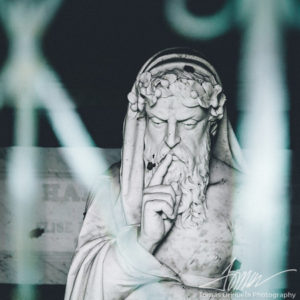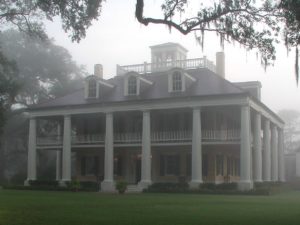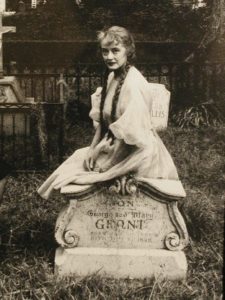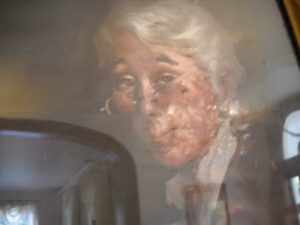
A record number of people are paranormal enthusiasts. The twenty-first century has brought more options: podcasts, websites, social media posts and blogs like this. Of course, this is in addition to television shows, books, and personal visits to haunted sites. So, the question is:
Are we more obsessed with seeking out ghosts or is it simply a matter of more readily accessible choices? Are we more curious than our ancestors in what lies beyond?
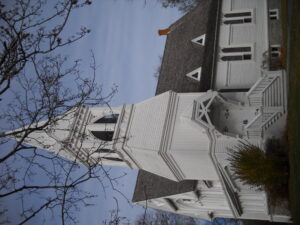
In the town of Yarmouth (Cape Cod/Massachusetts), incorporated in 1793, you can still attend the Church of New Jerusalem. The church was founded on the philosophy of 18th century Christian mystic Emanuel Swendenborg who claimed to have the ability to commune with the dead. Swendenborg is said to be able to go into a trance and speak with angels, devils, Jesus, and departed human souls.
In 1830, Harvard graduate Caleb Reed, brought Swedenborg’s teachings to the Cape. Here, those who had lost loved ones during the Civil War adopted the idea that their loved ones lived in a different dimension but could still be communicated with through séances.
Mary Todd Lincoln, wife of President Abraham Lincoln, attempted to reach her young son Willie through séances. Willie died at the age of 12 in the White House. Abraham Lincoln is known to have attended one of these séances. Other notable believers in talking to the dead were poet Ralph Waldo Emerson and American writer Henry James. James is the author of The Turn of the Screw which delves into the evil actions of a pair of ghosts.
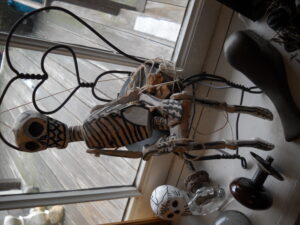
Illustrator and author Edward Gorey moved to a home in Yarmouth in 1979, his writings were often tied to the occult. He drew a number of ghostly figures and created the cover for Witches and Warlocks-Tales of Black Magic Old and New. Gorey talked about his own experiences with ghostly incidents. He mentioned to a visitor the strange disappearance of all the finials from his lamps along with his collection of tiny teddy bears. Gorey’s former home today is a museum and gift shop. Two women who were in what had been the children’s room suddenly got a chill that raised the hair on the back of their necks. Then they heard the creak of the floorboards as if an unseen someone just walked in. They believed it was the ghost of Edward Gorey checking on why they were in his house.
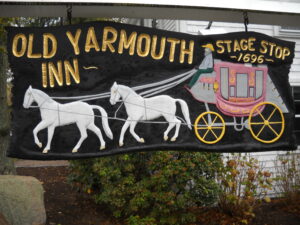
In the twenty-first century, Shelia Fitzgerald, co-owner of the Old Yarmouth Inn, has no doubt that the ghosts of two early occupants still inhabit the 1696 dwelling. And she has proof on security footage that one of the vengeful spirits opened a locked door and let her dogs out.
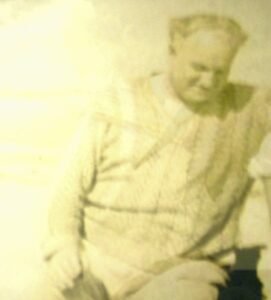
I believe we are innately curious creatures. We want an explanation for what our eyes think they just saw, for odd sounds, sudden drops in temperature, and feelings that we are not alone. If we are convinced that the dead just reached out to us, then relying on our instincts is the way to go. That “sixth sense” kicked in and we should embrace it. We are each our own psychic medium and our lives are richer for keeping in touch with the past.
To learn more about the ghosts of old Yarmouth, pick up a copy of THE HAUNTING OF CAPE COD AND THE ISLANDS. ENJOY and happy hunting.
About 18400870
Debunking “Evil” Hauntings
Bedeviled, beleaguered, tortured, possessed, cursed, tormented, , plagued, ghoulish, macabre, blood curdling, eerie, jinxed, spooky, anguished, oppressed unearthly, otherworldly—all adjectives commonly associated with hauntings.
Recently, a curator at the British Museum revealed a 3,500-year-old tablet believed to contain the earliest known depiction of a ghost. The clay tablet is said to be part of a guide to exorcising ghosts. According to curator Irving Finkel, “When you examine it and hold it under a lamp, those figures leap out at you across time in the most startling way.” The text of the tablet gives detailed instructions on getting rid of pesky ghosts: the exorcist is to make figurines of a man and woman; prepare two vessels of beer; and at sunrise, speak ritual words calling on the Mesopotamian god Shamash, who was responsible for bring ghosts to the underworld. The final line of the text warns the reader to “not look behind you!”
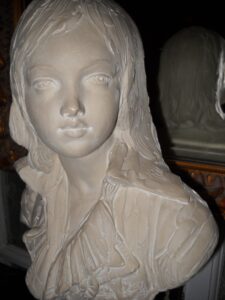
In an article for World History Encyclopedia, Joshua J. Mark wrote that all ancient civilization held beliefs involving the survival of souls after bodily death. While these souls belonged to the realm of the dead, they might return to the living world due to improper funeral rites or unfinished business.
So the myth of evil hauntings was ripe at the beginning. In today’s world we have vampires, werewolves, and the walking dead to keep us awake at night and terrorize our dreams. Yet, in the writing of six books about haunted sites, I have never encountered a monovalent ghost or spirit. Nor, has anyone of the countless people I have interviewed expressed a genuine fear of their resident ghost. In the south, in particular, families embrace spirits of ancestors who linger on. Mary Louise Prudhomme, Director of Louisiana’s Folklife Program says, “Personally I find it [the possibility of returning spirits] comforting and it doesn’t scare me at all” Kathy Hall, former front desk manager at the “haunted” Cedar Grove Inn in Vicksburg proudly states, “Each of us who have been at Cedar Grove Inn for a while, John, Joe, myself, we all respect this house and we respect the ghosts.”
Donna White, a hostess at Merrehope in Meridian, Mississippi is related by marriage to the historic home’s teenage ghost, Eugenia Gary.
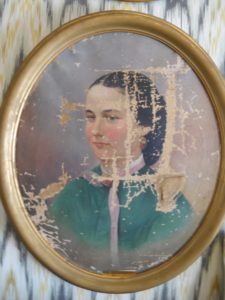
Donna admits an initial trepidation when first accepting a job at a site with multiple ghosts. “When I first worked here I would come in and announce: Okay, folks, this is a big house, and there is room enough for all of us. Get used to me. I am not going anywhere.” After years on the job, Donna has gotten on more familiar terms with her kindred spirit. “I arrive and say, ‘Good morning, Eugenia.’ At the end of the day it’s, ‘Goodbye, Eugenia. Take care of our home. See you next week.’”
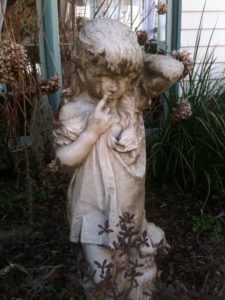
Is a fear of ghosts and haunted sites ingrained in our culture, or can we now admit it is more a fear of the unknown? Only in rare cases do spirits have evil intent. If we open ourselves to the possibilities, acknowledge that those who came before us might leave some trace of their former selves behind, we can find comfort. We can learn their stories—their struggles and triumphs—and our lives will be richer for knowing them.
An Explosion of Hauntings
Three new ghost books make their debut: HAUNTED LOUISIANA, HAUNTED CAPE COD, and
HAUNTED CAPE COD’S SEA CAPTAINS, SHIPWRECKS, AND SPIRITS.
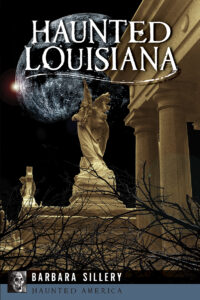
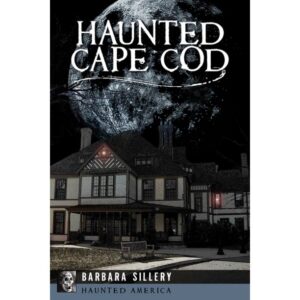
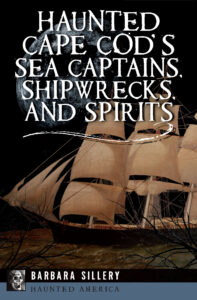
In 2021, my publisher, Pelican Publishing, asked if I would like to revisit my original books, THE HAUNTING OF LOUISIANA, THE HAUNTING OF CAPE COD AND THE ISLANDS, AND THE HAUNTING OF MISSISSIPPI and update and write new chapters for the Haunted America Series originally published by Arcadia/History Press. Pelican is now a division of Arcadia.
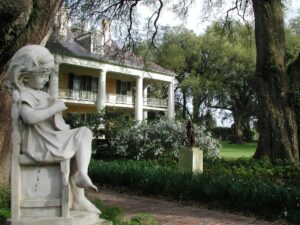
So, as any good writer and researcher, I happily returned to “the scene of the crime.” Each of my new books for the Haunted America Series includes some favorite ghost stories along with new ones. What I discovered is that if you keep peeling back the layers and tugging at the loose threads, more and more haunted tales await you.
In HAUNTED LOUISIANA a visit to an old house revealed multiple ghosts. With all of the construction and restoration at Houmas House in Burnside, Louisiana, staff, contractors, and guests have had a few unexpected encounters with ghostly figures, including one who walks through walls. “There is a tall, tall black man,” states Houmas House historian Jim Blanchard. “He knew exactly where he was going when he walked through the wall.” During the restoration of a cottage on the grounds, workers peeled back the wall paper where the ghost had passed through and uncovered a previously unknown doorway. Also at Houmas House, a tiny female child is fond of appearing both outside on the grounds and inside the main house. “She has on a blue dress with a pink ribbon and brown hair,” states owner Kevin Kelly. The ghost child is thought to be the daughter of early owners who died of yellow fever.
HAUNTED CAPE COD provided the opportunity to return to old haunts and find my spectral friends still hanging out: an obsessive-compulsive preacher, Native American lovers, a trio of ghosts who share spectral spaces at a local inn, and wealthy siblings with suicidal tendencies. They’re back!
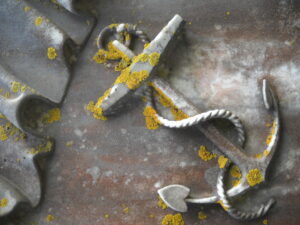
The research trips for HAUNTED CAPE COD’S SEA CAPTAINS, SHIPWRECKS, AND SPIRITS had a few surprise twists. I have been on the Board of Directors for the Falmouth Museums on the Green for a few years but had been unaware of the very tidy ghost of Julia Wood, the last private resident of a historic house on the grounds. Julia’s ghost does not like visitors leaving fingerprints on her silver tea set in the dining room. She follows behind with a handkerchief poised to polish the silver. She prefers staying out of sight, but a number of alert docents and guests have spotted the handkerchief waving about.
The tales of the sea captains and their shipwrecks are tragic but the steadfastness of their ghostly crew over the centuries is admirable. They’ve left haunted messages in a bottle and survived being yanked overboard by an angry whale. Retiring to life as landlubbers a few of these former sea captains choose to haunt their homes. While their widows cling to the memories of loves lost; their spirits refuse to leave. Other restless ancient mariners, such as Capt. Caleb Osborn Hamblin, roam about the cemeteries where they are buried.
All in all an amazing group of spirits. As death nears, human nature yearns for ways not to be forgotten. A gentle nudge from the beyond, a handkerchief floating in midair, or a now-you-see-me, now-you-don’t momentary reappearance may be all it takes to be remembered by future generations.
MORE TO COME: HAUNTED MISSISSIPPI’S DEEP DELTA AND BEYOND, and HAUNTED NANTUCKET.
Thank you Ernie and Bert
In my new favorite cartoon, Ernie and Bert from Sesame Street stand side-by-side and announce (via a caption over their heads):
“ The years 2020 and 2021 are brought to you by the letters W-T-F.”
I concur. In years where up is down, wrong is right, and you’re bombarded with vax vs anti-vax, you have to question W-T-F?
Which brings me to all things haunted. Given what we have all been through, why not embrace the presence of ghosts all around us? I personally find the subject very comforting. A little reassurance in this chaotic world that the past has not disappeared or been erased or obliterated. History is our story, the good and the bad. It tells us where we come from, how we got here, and hopefully, gives a glimpse into how we might make a kinder world.
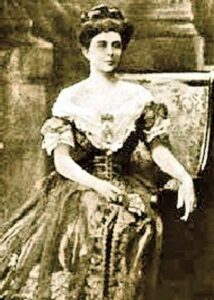
Josie Arlington, the Bourbon Street Madam, whose ghost now roams Metairie Cemetery in New Orleans seeks out former gentlemen callers buried nearby. She was once a young girl whose aspirations probably did not include running a bordello, yet as a ghost she has found a way to find solace. -The Haunting of Louisiana

Hannah Rebecca Crowell could never imagine that one day she would be appearing in ghostly form as a hologram at the Sandwich Glass Museum. Living in the mid-1800s, she would never even have known about holograms. This young widow stayed true to the promise engraved on her wedding band “I will never marry again,” remaining loyal to her first love for the next 88 years of her life. Luckily, her touching tale has been preserved. -The Haunting of Cape Cod and the Islands
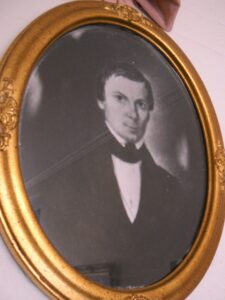
John Alexander Klein, the original owner of Cedar Grove in Vicksburg, Mississippi, now gets to smoke his cigars indoors a century and a half later. John gave up smoking to please his beloved wife Elizabeth, who abhorred the smell of cigars and cigarettes. Now as a ghost, John indulges in smoking wherever he pleases. Former Cedar Gove Inn Executive Chef John Kellogg not only smelled the cigar smoke but actually saw the flare of the flame as the ghostly hand of John Klein lit up in the private home turned inn. –The Haunting of Mississippi
So there are some perks to returning as a ghost. And benefits to those of us still cloaked in human form. We get to see, and hear, and be aware of the presence of those who came before us. And get some reassurance that there is more to look forward to in the afterlife—especially when our current world is spinning a little too fast and we are caught in a whirlwind of W-T-F.
Ghosts Who Run Amuck
At the Cedar Grove Inn and Restaurant in Vicksburg, Mississippi, ghosts roam here, there, and everywhere. “They come and go in spits and starts,” says co-owner Phyllis Small.
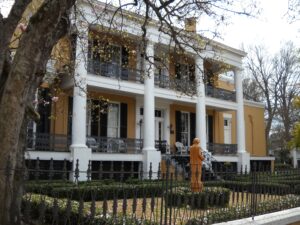
Executive Chef John Kellogg is positive there’s a ghost is in the private dining room. “I walk by the room at night; it’s empty except for flare of a flame at the head of the table; there is a wisp of smoke curling up as if someone has just taken a puff on his cigar.” The chef believes it is the ghost of John Alexander Klein, the original owner, who enjoys his cigars in the afterlife.
![]()
![]()
But Desk Manager Kathy Hall, along with members of the housekeeping staff, believes Mr. Klein prefers the parlor as they often see his reflection in the mirror between the windows.
![]()
The ghost of Elizabeth Klein, John’s wife, refuses to give up her role as hostess. She sprays lavender perfume in the halls to mask the smell of the cigar smoke. And she checks on startled guests, often sitting on the bed to have a chat in room number 8, the Ashley Wilkes suite.
The spirits of John and Elizabeth Klein do not limit their visitations to inside the house; they’re known to put in personal appearances around the grounds. John prefers sitting quietly in the gazebo. “Very, very early in the morning that’s when you see him,” says Chef Kellogg.
![]()
The lovely Elizabeth favors the dark of night. She’s been spotted in a long white dress, weaving in and out of the hedges on the front lawn or floating by the upper balcony.
![]()
The ghost of the Kleins’ young son Willie started appearing on the rear wrought iron stair case following a fatal accident. Young Willie had just returned from hunting with a friend; they both fell asleep in the back yard. On waking Willie’s friend accidentally discharged his gun, hitting Willie in the chest. Willie managed to crawl halfway up the staircase seeking help, but only made it halfway before stumbling back down to his death. Guests at the inn claim they can still hear the thud, thud, thud of poor Willie’s body falling down the stairs.
These same guests, if they had a choice, would probably choose instead to hear the happy sounds of a child’s ball bouncing down the front interior staircase. Elizabeth Klein gave birth to ten children while living at Cedar Grove. The bouncing ball likely belongs to one of her six surviving youngsters, who hang around to play.
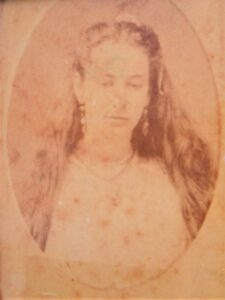
Bartender Joe Connor does not like the paranormal antics of the ghost who wreaks havoc in the bar. “He makes the glasses fly through the air.” Joe swears he has had bar patrons who’ve witnessed the poltergeist activity. The blame is placed squarely on Andre, a disgruntled former cook, who now resides in the spirit world.
Upstairs In the Bonnie Blue room a mischievous spirit leaves handprints on the wall, while another shoots off guns followed by screams in the ballroom. And just to keep the staff on high alert a troubled spirt is intent on knocking over a massive gilt-framed painting in the dining room.
At the Cedar Grove Inn in Vicksburg, there’s no need to ask its ghostly inhabitants to Come out, Come out where ever you are; they’re everywhere inside and out . . . and there’s more.
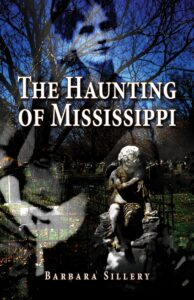
For more information about these restless spirits, read Chapter 3 in my book The Haunting of Mississippi, available through this website, in independent bookstore, and as an eBook through Amazon and Barnes and Noble.
Ghost Roots
As this new year flutters in, I began to ponder the seemingly self- perpetuating nature of ghost tales. Are ghosts merely echoes of someone who once was— a shadow of a memory? Why, like the solitary leaf clinging to the barren branches of a tree in winter, do they not just fall to the ground and be done with it? Popular mystery writer Sue Grafton argues that “Ghosts are present among us because we won’t let them go.”
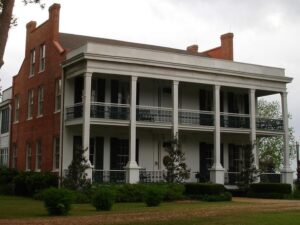
Docent Beulah Davis, a strikingly tall black woman, has worked at Loyd Hall Plantation for many years and stands by her beliefs. .“When you see a figure or a shape moving on your side vision, and you know you’re the only person that’s supposed to be there that’s alive . . . that’s when I decided there was something for real.” To doubters, Davis cautions, “Wait until you have that personal experience and then you decide.” During her time at Loyd Hall in Chenyville, Louisiana, Davis has encountered all the plantation’s resident spirits: William Loyd, the original owner and reputed double agent during the Civil War; Harry Henry , the teenage Union Soldier who deserted his regiment, hid in the attic, and ultimately was shot and killed by Grandmother Loyd when she stumbled across the hapless soldier; and Sally, the family’s black nanny. It was rumored poor Sally was poisoned by persons unknown.
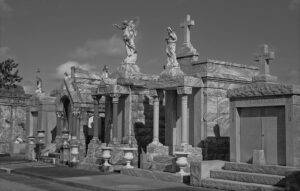
Sir Arthur C. Clarke, noted author of 2001, A Space Odyssey explains the existence of ghosts with a simple mathematical equation: “Behind every man is thirty ghosts, for that is the ratio by which the dead outnumber the living.”
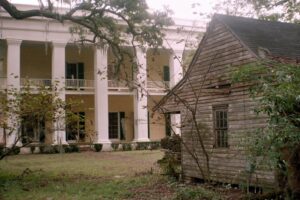
Yet, in some cases, ghosts and haunted tales were “created” to serve a sinister purpose. Author Gladys –Marie Fry in her work Night Riders in Black Folk History purports that in the decades prior to the Civil War there was a “systematic exploitation of black folk beliefs and fears.” Fry writes that the slightest hint of a ghost lurking just beyond the boundaries of the plantation complex was a “dominant factor employed by wealthy planters to control slave movements.” Beulah Davis agrees that white masters and overseers used this scare technique to “keep rein over them.”
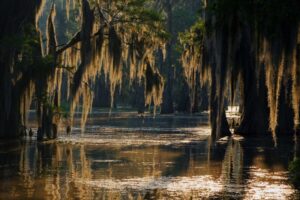
The idea of a ghostly figure that might reach out and grab you was also employed by Cajun parents to instill a little healthy fear in their children. The goal: to keep them safe from earthly predators, both wildlife and human. Cajun children were warned not to stray off the prescribed pathway or the Loup Garou, the Cajun werewolf, would snatch them up. Captain Jerome Dupré traces his ancestry back to the early Acadian settlers of Bayou Lafourche in the swamps of southern Louisiana. Dupré remembers being told by his parents, “If you go to Grandma’s house you stay on the path. If you wander off the Loup Garou is gonna bite you on the neck and you’re gonna spend the rest of your life dancing with the other werewolves on the bayou.” The name of the inventive parent who first spun the tale of the Loup Garou has been lost in the annals of folklore.
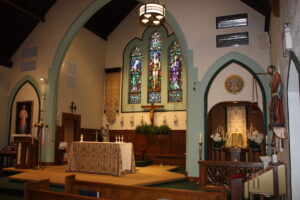
Could it be that easy to dismiss all ghosts and hauntings as just tall tales with a hidden agenda.?
William Maestri, former Catholic priest and moral theologian offers a challenging conundrum: “We are told by our culture that the only thing that matters is science which you can taste, see, touch, smell, and measure. That’s reality. Well, there is something in the human spirit that rebels against that. There are whole levels and dimensions of life that are simply going to come out whether we like it or not.”
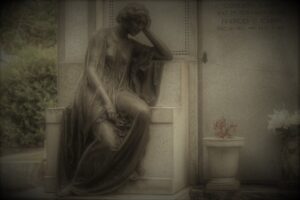
And for many of us the mere possibility of a ghost sighting evokes a sense of excitement, a hope that there is indeed a still a link to a paranormal world where the long dead linger among us.
‘Twas the Night Before Christmas . . .
In the traditional version of the Night Before Christmas, “. . . not a creature was stirring not even a mouse.” While this popular Yule time tale accounts for all creatures great and small, it fails to mention Christmas Spirits—those who still joyfully roam about and celebrate the holidays centuries later.

Holidays often trigger memories of family gatherings good and bad. As I sat staring out of my office window reminiscing about Christmases past, I began thumbing the pages of a small book about Pearl River, the second largest hamlet in New York, and my childhood hometown. I’d recently ordered it from my publisher, Arcadia/History Press from their Images of America series. Page 63 was a total revelation. My hometown had a ghost complete with skeletal remains.
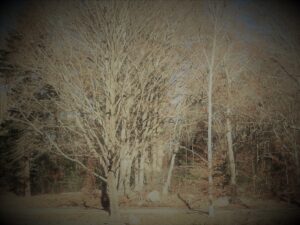
I squinted at a distorted picture of spindly pine trees surrounding a large object labeled “Maria’s Rock.” The nearly indistinguishable blob in the background was further identified in the photo’s caption as a glacier boulder, a leftover from the last ice age. Here, according to the legend, a ten-year-old child died from a deadly combination of exhaustion and exposure. In 1730, Dutch immigrant Maria Huffy wandered away from her home in the nearby town of Tappan and mysteriously ended up in Pearl River. For reasons unknown she sought refuge at the base of the giant boulder and fell asleep. Hunters stumbled across her skeletal remains the next spring. The ghostly lore swears that while the good citizens of Pearl River would often gather for daytime picnics at the picturesque setting, they would never venture there at night for the cries of little lost Maria can still be heard at dusk.
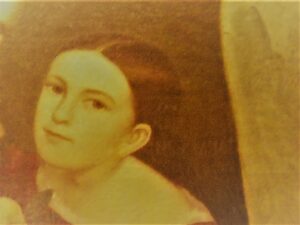
This image came to mind when I began to imagine what Maria might have looked like. Dark hair, large luminous eyes. I began to question why I never heard of her? Pearl River was where I grew up. How had this tantalizing ghost tale escaped me?

The answer may rest in my “orthodox” Catholic upbringing. According to the tenants of Catholicism, the Catholic Church does not believe in ghosts. However, our prayers began with the Sign of the Cross repeating the manta “In the Name of the Father, the Son and the Holy Ghost. Amen.” The reforms of the Second Vatican Council (1962-1965) under Pope John XXIII tired to clear up misconceptions about the Holy Ghost. To distinguish the third person of the Trinity from the common perception and/or association with Halloween entities, the word Spirit was substituted for ghost. Apparently there was to be only one sanctioned ghost, and he was to be revered; we were now to address him as Holy Spirit.
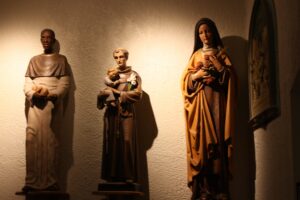
It didn’t help that as at the same time we were also taught to pray to the souls of the Saints, good folks, who somehow landed in Heaven, as these same souls or spirits might have an “in” with God. For me spirits, souls, ghosts all fell in the same category. I didn’t get the distinction. But the nuns who taught me did. Generic ghosts and hauntings fell into the forbidden category.
Sadly, I guess that’s how I missed or was carefully steered away from the tale of little lost Maria and the haunted rock. Which now, of course, has moved her to the top of my “Need-to-Find-Out-More” list.
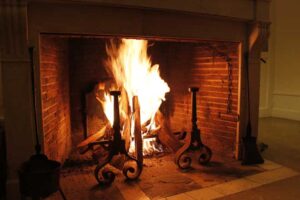
As we sit by the fire mesmerized by the flickering flames or admiring the twinkling lights of the Christmas tree in the corner, know that our departed loved ones are smiling back. Some of the more gregarious souls may also be waving, dancing a jig, or softly planting a kiss.
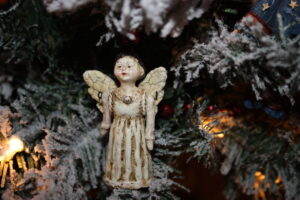
Here then is my 2020 Christmas Mantra:
Gather round ye spirits—family, friend, and foe. Raise a glass and toast to memories and connections to all those who came before. Happy Holidays.
Ghosts Come Out to Play on Halloween
Our ancestors, the early Celts celebrated the Feast of Samhain on October 31. They were marking the end of the harvest season and the beginning of winter. As balladeer Danny O’Flaherty from the Gaelic-speaking region of Connemara, Ireland shared with me, October 31 was Celtic New Year. These early Celts also believed that on October 31, the barrier between the natural world and the supernatural world was lowered and spirits of the dead were free to wander about.
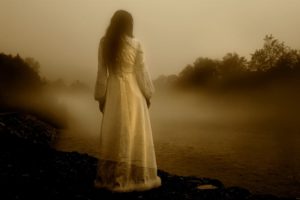
Our ancestors were not particularly interested in bumping into a spirit or a ghost so they gathered together and built large bonfires to ward off the darkness . . . and the spirits. When it was time to return to their homes, they carved out a gourd and placed an ember from the bonfire inside the gourd to light their way home (the precursor to flashlights). They also covered themselves in animal skins, hoping the spirits wouldn’t recognize them (the origin of our present-day habit of wearing Halloween costumes). On arriving home, they put out food or treats to appease the spirits (how “Trick or Treating” began).
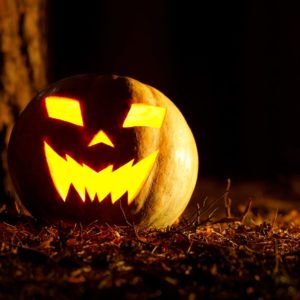
The question becomes do ghosts or spirits of the dead also believe in keeping alive the tradition of celebrating on the Feast of Samhain (October 31)? Do ghosts still favor parading about in larger-than-normal numbers on Halloween? Are we more likely to encounter them on Halloween? Hard to tell. With so many costumed witches, warlocks, skeletons, hairy monsters going door-to-door, who knows what is actually lurking among them. But it is fun to imagine.
The town of Salem, Ma is having a hard time this season. They expected fewer visitors due to Covid but people keep pouring in. The mayor of Salem has gone on television pleading with people that if they don’t have a reservation already at one of the surrounding hotels to please stay away. They are finding it impossible to enforce social distancing and the mask mandate.
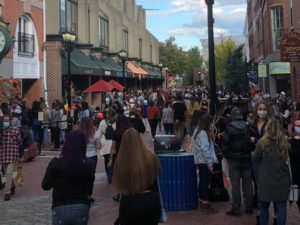
So apparently ghost seekers still believe that the barrier between the natural and supernatural world is going down the closer it gets to Halloween and the chances of bumping into a ghost, especially in Salem, home to witches and warlocks, is going up.
Certainly, it’s hard to avoid thoughts of spirits or ghosts with so many decorations, jack-o-lantern, mock tombstones, and plastic skeletons reminding us that Halloween, All Hallows Eve, is approaching. So if I were a ghost would I simply give in and join in? Why not? If that wall is down between the living and the dead, I’d welcome the invitation to the party.
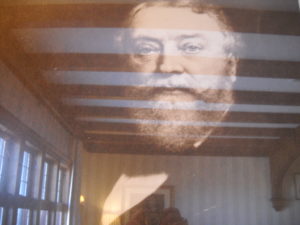
Happy Halloween and let me know if you’ve had an exciting encounter with one of your ancestors this Halloween season.
And for those of you who’d like to hear and see (via photos) a few ghost stories from my book, The Haunting of Cape Cod and the Islands, I will be the guest speak for the Virtual Supper Series at Highfield Hall and Gardens (the museum is haunted by the ghost of Emily) on Thursday, Oct. 22 from 6-7:30 pm via Zoom. https://highfieldhallandgardens.org/event-calendar/special-events/virtual-supper-club-series/
Ghosts on the Move
The ghost of Eugenia Gary haunts Merrehope, a twenty-two room mansion in Meridian, Mississippi. Eugenia died tragically of consumption and was buried in Livingston, Alabama. She neither lived nor died at the mansion. So how is her ghost haunting a house in Mississippi, and why? Docents at the elegant home blame it on her portrait.
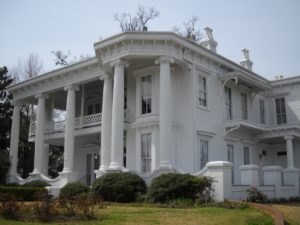 Merrehope
Merrehope
The president of the Meridian Restorations Foundation, which opens Merrehope for tours, believes she encountered the ghost of a young girl standing in the front hall wearing an 1860s-era green dress. A positive identification was confirmed with the arrival of her portrait. Eugenia was the daughter of John Gary, formerly of Alabama. Following the death of his daughter, John and his wife purchased, expanded, and restored the mansion in Meridian. “Some of the Gary descendants lived on the Gulf Coast. During Hurricane Camille [1969], their house was destroyed, but they managed to save the portrait of Eugenia which was sent to Merrehope for safekeeping,” says Bebe Stuart Jones of the Meridian Restoration Foundation

The oval portrait of the sweet young girl is heavily damaged, but Eugenia’s face shines through. Most of the current staff believe that Eugenia’s spirit traveled with her portrait and took up residence. Hostess Donna White has a special connection to the teenage ghost. Through marriage, she is a descendant of the Gary family. On her first encounter Donna was alone in the house. “When I came through the double parlor into the main hall it was dark, and then all of a sudden, I ran into Eugenia . . . She was heading away from me towards the back of the house. I called out her name, ‘Eugenia?’ I drew in my breath and she was gone.”
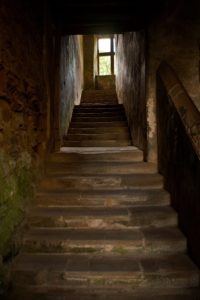
Little Lucy Paine drowned around 1718 in the cellar of her house in Barnstable, Massachusetts. The foundation of the house sat over an underground river. Lucy fell in trying to retrieve her favorite blue ball. Lucy couldn’t swim. Her childish ghostly giggles were heard for decades coming from the second floor nursery.
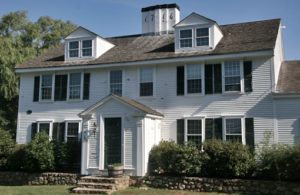
Two centuries later as her former home went from restaurant to office building, Lucy was lonely. Owners of a new restaurant in town purchased some furniture from the building and Lucy’s ghost hitched a ride.
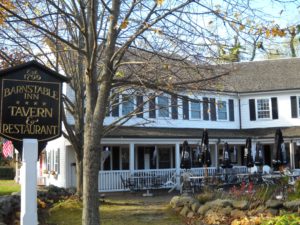 .
.
Lucy has been spotted at the new location by wait staff and diners alike.

The forty-five carat, three- hundred-and-fifty-million dollar Hope Diamond is said to carry a four-hundred-year-old-curse. The curse travels from owner to owner bringing sickness, death, and ill-fortune to all who wear it. Among the more infamous wearers was Marie Antoinette.
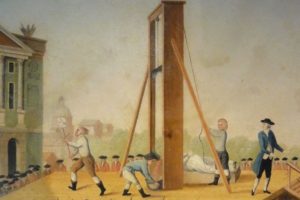
Poor Marie lost her head to the guillotine. Today, the diamond it is on display, but heavily guarded at the Smithsonian’s Museum of Natural History.
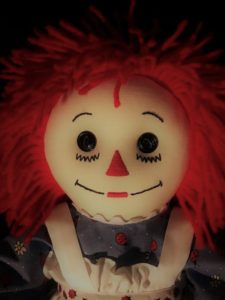
And then there’s Annabelle, also under lock and key, at a Connecticut museum. But unlike the horror flick which depicted Annabelle as a ferocious porcelain figure, the real Annabelle is actually a beloved floppy Raggedy Ann doll. However, the reputation that surrounds the doll is such that the current owners keep her behind glass.
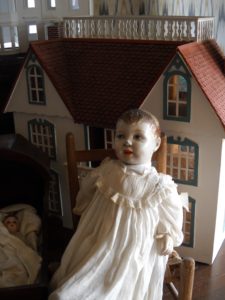
Be it doll or diamond the moral of the story: Caveat Emptor. Buyer Beware. When purchasing an antique object, do your due diligence, and May the Spirits Be With You!
Folklore or Fakeloare
It’s relatively easy to fake the presence of ghostly phenomena: flashes of light (often referred to as orbs), static on digital voice recorders (subject to human interpretation), and the wonders of Photoshop.
The haunted status of Houmas House in Burnside, Louisiana is perplexing to owner Kevin Kelly. According to both visitors and staff, adult spirits abound. A nineteenth-century river boat captain paces back and forth on the Widow’s Walk atop the roof of this antebellum beauty. A second male figure strolls the grounds. “There is a tall, tall black man,” states Houmas House historian Jim Blanchard. “When I first saw him . . . he went behind me . . . and through the wall.” Blanchard believed the ghost knew exactly where he was going. “We were redoing one of the cottages on the grounds, opening up paneled walls that had been added on, and discovered a doorway that had been covered up. The ghost was walking through a doorway that was original to the cottage.” Owner Kevin Kelly agrees that this particular ghost sticks to familiar paths, ignoring contemporary obstacles. “I put a big circular fountain right behind the house. People tell me he walks right through the fountain but doesn’t get wet.”
Kelly freely admits he has never seen any of the ghosts of Houmas House but wishes that if he could arrange for a ghost to put in an appearance his vote is for movie star legend Bette Davis.” Kelly explains: “In 1963, Miss Davis arrived at Houmas House to film scenes for Hush . . . Hush Sweet Charlotte. People want to see where Betty Davis stayed here at Houmas House. “She is our number one draw.” Kelly wistfully adds, “If I could get the world to believe her ghost was on this property, I’d get millions of people here a day.”

Visitors to the circa 1796 Mrytles Plantation on the National Register of Historic Places can choose either the History or Mystery tour. During the latter, tour guides regale the curious with a laundry list of spooky activities: handprints inside mirrors, footsteps crashing up and down the main staircase, sweet perfume and pungent cigar odors, cold spots, photos of a transparent female figure lurking in the alleyway between the buildings and silhouettes of children who may have been poisoned kneeling on the roof. The plantation also operates as a bed and breakfast and potential guests continue to pose the million-dollar question: “Which room is the most haunted?”
Haunted tales at historic sites do equate to an increase in revenue.

Yet Maida Owens, former director of Louisiana’s Folklife Program, insists a distinction be made between folklore and “fakelore.” “I see nothing wrong with haunted history tours or ghost tours and when combined with good theatre or storytelling they can make exceptional presentations that reflect an area’s culture. Folklore,” says Owens, “are the traditions that have been passed down in a community over time. Fakelore is an obvious commercial embellishment of the past.” Owens adds that fakelore shouldn’t be foisted on a gullible public without some type of warning. “It’s about truth in advertising more than anything else.”
So when visiting a reputed haunted site or trailing along on a local ghost tour, what is the truth? Perhaps we need to look to ourselves. Are we there to be entertained? As we stroll through the bedroom were Bette Davis slept during filming at Houmas House should we be rewarded with the sight of “Bette Davis eyes” peering back at us? The lyrics of the song certainly are apropos: “She’ll tease you, she’ll unease you. All the better just to please you.”
The choice is yours: suspend skepticism and embrace the moment or walk away confident that you haven’t succumbed to fakelore no matter how well told.

